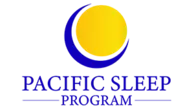
Polysomnography is the term used to describe the process of formal sleep testing. For many sleep disorders this procedure is essential to establishing the kind of accurate diagnosis needed for selection of the treatment most likely to be successful. For sleep apnea syndrome it is often also used to begin treatment or make certain a therapy has been effective.
Polysomnography is conducted in our specially designed sleep testing and treatment facility. The test consists of the continuous monitoring of a wide range of physiologic features throughout a person’s usual sleep period. Things measured include the stages of sleep itself, breathing, heart rate and rhythm, oxygen levels, and movement patterns. All this information is collected from sensors, which are applied to the skin at various locations. Minimal, if any, discomfort is experienced. The sensors are connected in such a manner as to easily allow movement.
Goal
The sleep testing process is often a central part of your visit to the PSP. Our goal is to make your stay in the laboratory as pleasant and medically successful as possible. PSP staff will make every reasonable accommodation and effort to accomplish this. We view the evaluation and treatment process as a co-operative effort that involves us all, patients and professionals alike. Below you will find information which we feel is important to reaching the goals of a clear understanding of the sleep disorder problem and finding a solution to it. If you have any questions or concerns about the policies and procedures or have any special needs, please advise our staff directly.
Laboratory Staff
All testing in the laboratory is conducted by PSP registered sleep technologists. They work in the specially designed control room, where all the recording instruments are located. They remain with you throughout the entire testing process.
Timing of Testing
Recording sleep that is as close to what is experienced at home is obviously important. Most people have a characteristic time for sleep. The PSP is organized so that we are generally able to conduct testing at any time during the 24-hour light-dark cycle. For rotating shift workers the time for testing is determined during the sleep disorders consultation.
How Many Nights?
In the past it was standard practice to obtain two consecutive nights of testing. Though following such a course may be more precise, 95% of the time in our laboratory the same diagnostic conclusions and treatment decisions are made at the end of the first night as would be at the end of a second one. Consequently, we never schedule more than one night for diagnostic purposes. At times a second night is needed to begin certain kinds of treatment or to objectively evaluate the results of therapy. In cases of sleep apnea of especially severe intensity, we also may try to combine a portion of the night dedicated to diagnostic monitoring together with a therapeutic segment involving treatment initiation using nasal continuous positive airway pressure.
What to Bring
You should bring certain items with you to your sleep test. Generally, a robe, slippers, and pajamas along with personal toiletry items are most appropriate. Nightgowns may be worn though are less convenient than pajamas from the standpoint of sensor application and movement. Shampoo is provided though you may wish to bring your own. Bringing your own pillow can be especially helpful, as this is often a very individual item. Snacks are appropriate at times as well but this should be discussed with Program staff member scheduling your testing.
